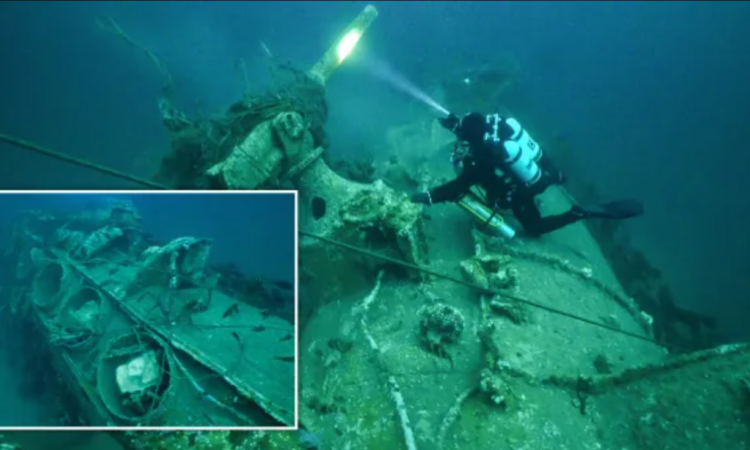
At the start of World War I in 1914, many powerful nations had submarines, but Britain believed the war would be won on land rather than at sea. The head of the British Royal Navy, John Fisher, did not think much of Germany’s 28 U-boats. He considered them weak and not a serious threat. However, Germany saw things differently and planned to use its submarines to block supplies from reaching Britain.
Britain tried to take control of the seas by placing underwater mines in the English Channel and declaring the North Sea a war zone in 1914. In response, Germany sent U-boats to patrol the waters and attack British ships. By 1915, these submarines were sinking British merchant ships at an alarming rate, destroying about 100,000 tons of shipping every month. This was double the amount of ships Britain could replace. Germany’s leaders believed that if they could stop food and supplies from reaching Britain, they could force the country to surrender.
Germany’s Kaiser, Wilhelm II, was confident in this strategy. He said that Germany would scare British ships off the seas and starve Britain until it had no choice but to beg for peace. Meanwhile, Britain’s top navy commander, John Jellicoe, secretly feared that Germany might actually succeed in forcing Britain into defeat.
To fight back against German U-boats, Britain came up with a clever trick. They created special ships called Q-ships. These ships looked like normal merchant ships, such as fishing boats or coal traders, but they were actually heavily armed with hidden weapons. The purpose of these ships was to fool German submarines into attacking. When a U-boat surfaced, believing it had an easy target, the hidden guns on the Q-ship would suddenly appear, and the crew would fire at the submarine before it could escape.
The British took inspiration from battles in the Indian Ocean and the Red Sea, where small trading ships armed with hidden guns had successfully defeated pirates and slave raiders. The navy decided to use the same tactic against German submarines. To make the deception even more convincing, Q-ships often staged dramatic scenes to trick U-boat commanders. The crew would pretend to panic, running to lifeboats as if abandoning ship. Some even carried pets or fake top-secret documents to make it look like they were fleeing in a hurry. Meanwhile, hidden gunners remained quiet, waiting for the submarine to get close enough.
Some Q-ships went even further with their tricks. They had fake explosions set up with small canisters filled with explosives. These would be set off if a German shell hit anywhere near, making it seem like the ship had been seriously damaged. Some had steam pipes that released smoke to make it look like the engine was failing. Others burned seaweed in tubs to create the illusion of a fire on board. All of this was done to lure U-boats into surfacing, thinking they had an easy target.
However, the risk was high. If the German submarine realized it was a trap, it could fire torpedoes and destroy the Q-ship before the crew even had a chance to fight back. The British sailors on Q-ships had to stay perfectly still and silent, sometimes for hours, to avoid giving themselves away. They waited for the enemy to get close before suddenly dropping the ship’s fake sides and revealing their hidden guns. At that moment, the British crew would quickly fire at the U-boat, trying to sink it before it could dive underwater and escape.
One of the most famous battles involving a Q-ship happened in February 1917. The Lady Olive was a Q-ship disguised as a coal trader sailing near the Channel Islands. The German submarine UC-18 spotted it and believed it was an easy target. The U-boat fired a torpedo at the ship, thinking it was another helpless cargo ship that couldn’t fight back. But the Lady Olive was actually heavily armed and waiting for this exact moment. As soon as the submarine surfaced to finish the job, the Q-ship’s hidden guns appeared, and the crew started firing. Both ships disappeared in the battle, and for years, no one knew what had really happened.
The survivors of the Lady Olive later said that UC-18 had been destroyed, but some experts did not believe them. The wreck of the submarine had never been found, and there was always a question of whether the German crew had managed to escape. Recently, a team of divers led by Karl Taylor set out to solve the mystery. After years of research, searching records, and deep-sea diving, they finally discovered the wrecks of both the Lady Olive and UC-18, proving that the Q-ship had successfully taken down the submarine.
By 1917, Germany had become even more aggressive with its submarine warfare. It no longer followed old “prize rules,” which meant that instead of surfacing and giving merchant ships a chance to surrender, U-boats would now sink enemy ships on sight. This made Q-ships even more dangerous to operate. Some had to take a torpedo hit and appear to be sinking just to convince a U-boat to come close enough for an ambush.
During World War I, Britain used more than 200 Q-ships, but they only managed to sink about 11 German submarines. Many Q-ships were lost in battle, and as Germany caught on to the trick, U-boats became more ruthless. They stopped taking chances and began sinking merchant ships without warning, fearing they might be disguised warships.
In the end, Q-ships were not the main reason Germany lost the war. Instead, better tactics like using sea mines and creating large ship convoys proved to be more effective at stopping U-boats. However, Q-ships did make German submarines more cautious and slowed down their attacks. The crews of these decoy ships were seen as heroes, risking their lives to outsmart the enemy.
Today, the wreck of UC-18 is considered a war grave, meaning it is protected from disturbance. The waters around Guernsey and the Channel Islands still hide many other shipwrecks from the war, each with its own story waiting to be discovered. For divers and historians, these lost ships remain a fascinating part of history, reminding us of the deadly cat-and-mouse game that took place beneath the waves during World War I.





